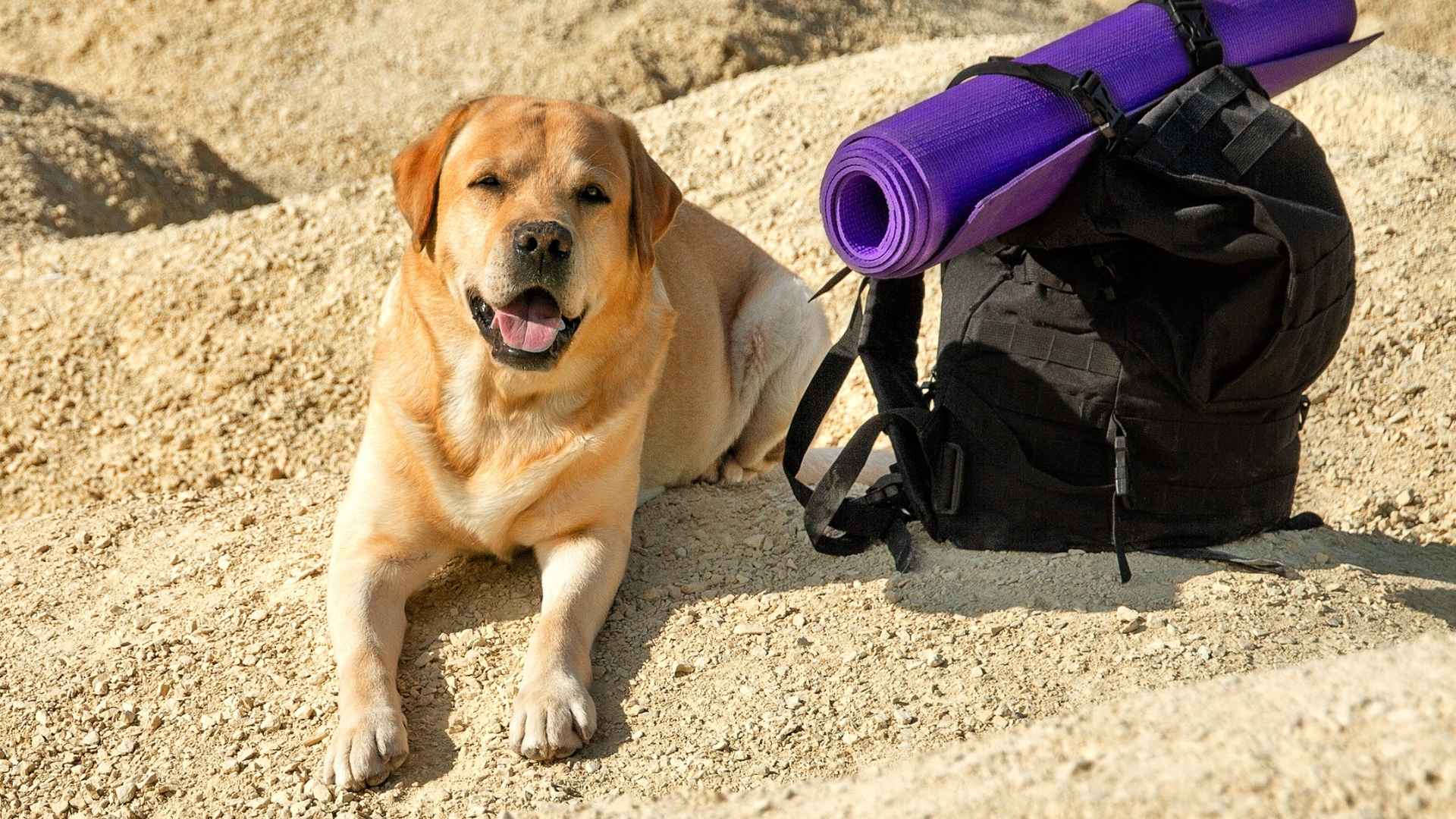For dog lovers who thrive on rugged adventures and scenic landscapes, having a four-legged companion that shares your passion for desert trails is a must. Some dogs don’t just tolerate the outdoors; they crave it. Especially when it comes to desert hikes, the ideal canine partner will have the stamina, resilience, and temperament to keep pace with every step of your sun-soaked journey.
Unlike casual walks around the block, hiking in arid terrain demands more from both humans and dogs. The breeds best suited for these treks are often those historically bred for endurance, alertness, and harsh environmental conditions. These dogs embrace the thrill of exploring dry, rocky paths and dusty ridges, reveling in the scents and sights of untamed nature.
From agile hunters to dependable working breeds, certain dogs are natural-born explorers. Their enthusiasm for adventure, keen senses, and high energy levels make them exceptional trail mates. Let’s discover the dog breeds that truly shine under the desert sun.
Dog Breeds That Love Desert Hikes
1. Vizsla
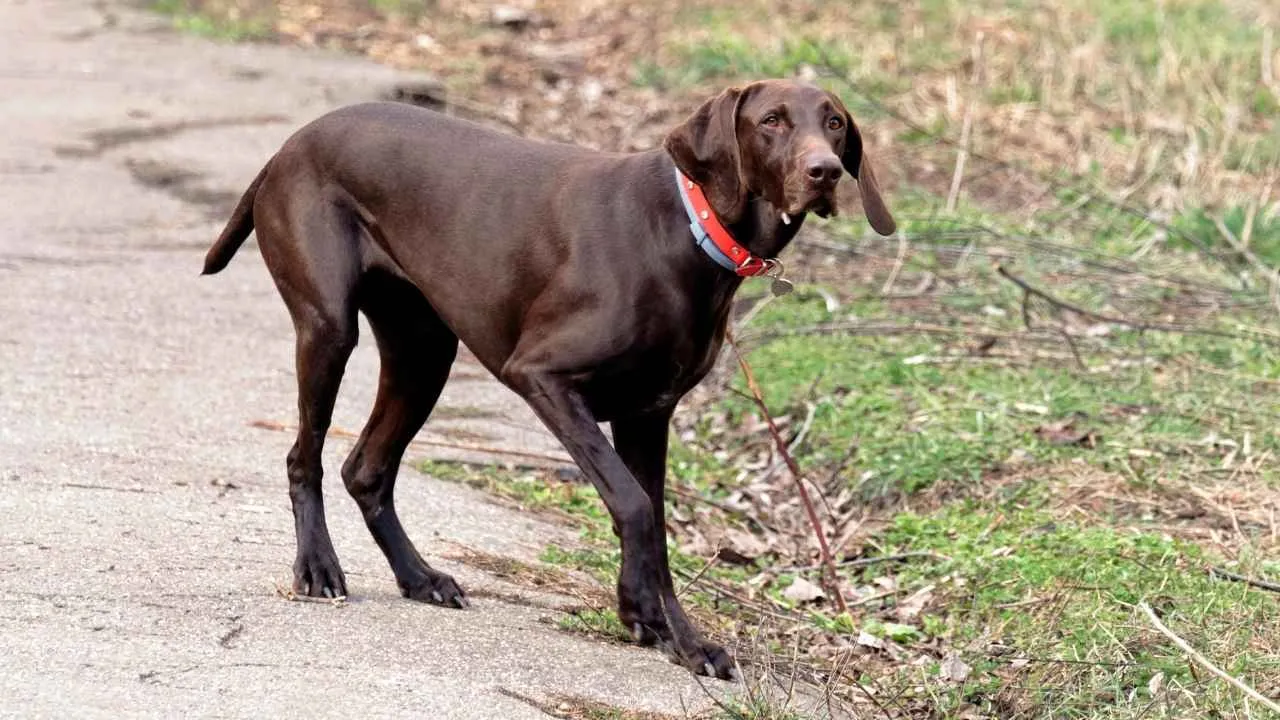
Bred originally for hunting in rugged terrains, this Hungarian breed thrives in open environments where it can stretch its legs and indulge its high prey drive. With their strong bond to humans, often earning the nickname “Velcro dogs”, Vizslas don’t just follow along; they stick by your side, making hikes not only active but also deeply connected experiences.
The AKC states that Vizslas have a smooth, short coat without an undercoat, making grooming simple. Although they do shed, occasional brushing with a rubber grooming tool helps manage it. Their sleek, rust-colored coat handles heat well, making them particularly suited to arid landscapes, though hydration is essential.
Exercise
Vizslas are natural athletes who demand both physical and mental stimulation. Their daily exercise routine should include at least 30 minutes of active engagement, but many will benefit from more intense sessions, especially those involving agility or scent-based activities like tracking.
Desert hikes provide an ideal outlet for their stamina and curiosity. Without regular stimulation, they may resort to barking, chewing, or digging. Positive reinforcement and interactive games help channel their energy productively.
Fun Fact: Even without formal training, these athletic dogs often chase small wildlife on trails, showcasing their enduring hunting instincts.
2. Weimaraner
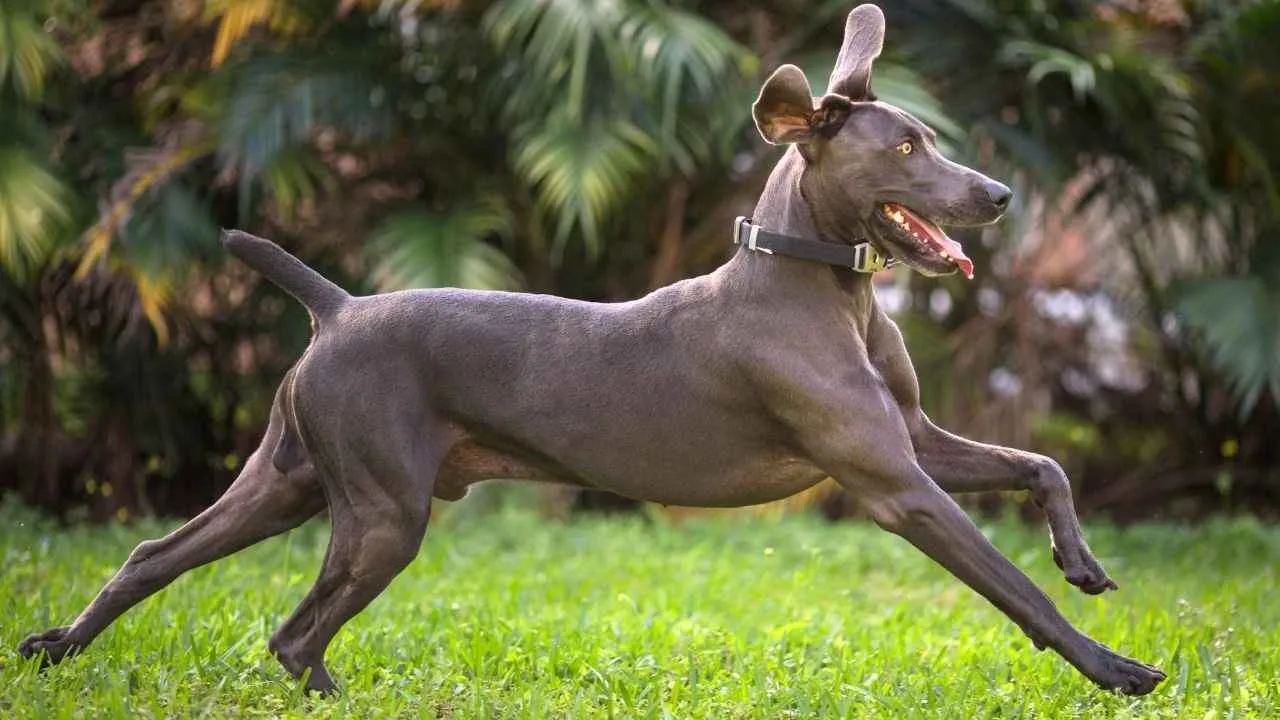
This breed is built for endurance and thrives in arid, wide-open spaces. Their sleek frame and high energy levels make them natural trailblazers, able to keep up across sandy ridges and rocky paths.
Known for their courage and devotion, Weimaraners relish challenges and are happiest when exploring side by side with their humans. Their acute senses and love for the outdoors make them well-suited for long, rugged excursions under the sun.
Exercise
Weimaraners require no less than two hours of exercise each day to stay balanced and content. PetMD states that the Weimaraner is a sociable, brave, and well-behaved breed. Being part of the sporting group, it needs plenty of exercise and mental engagement to stay healthy and happy. Without sufficient mental and physical stimulation, they may develop destructive behaviors.
Long hikes, especially in varied terrain like the desert, provide the perfect outlet. These dogs excel in activities such as hunting and even marathon running. A healthy Weimaraner can hike up to 20 miles with ease, making them one of the most physically capable breeds for outdoor adventures.
Fun Fact: The Weimaraner was developed in 19th-century Germany to be a fearless hunting dog with speed, stamina, and exceptional tracking ability.
3. Rhodesian Ridgeback

Originally bred to track lions, these muscular and independent dogs thrive in hot, dry environments. Purina reports that the Rhodesian Ridgeback is a large, energetic dog with a short, solid-colored coat and a unique strip of hair growing in the opposite direction along its back, known as a ridge.
Their sleek, short coat offers practical protection from the sun while keeping them cool, and their high energy makes them ideal companions for adventurers who love challenging trails. Their keen sense of awareness and loyalty mean they not only enjoy the journey but also look out for their humans along the way.
Exercise
Rhodesian Ridgebacks are built for endurance and love long distances. A well-conditioned Ridgeback can easily handle 10-mile hikes without tiring, and many enjoy even more. These dogs can also run alongside a horse for up to eight miles, making them exceptional partners for active outdoor lifestyles.
In addition to physical activity, they benefit from mentally stimulating tasks like tracking and agility, which help channel their high prey drive. Their need for daily engagement makes them best suited to owners who can match their energy and enthusiasm.

Fact: The breed earned its reputation in Africa by tracking lions, demonstrating bravery without engaging in harm.
4. Chihuahua

Despite their tiny size, Chihuahuas are spirited adventurers with surprising stamina. These pint-sized pups often form incredibly strong bonds with their humans, relishing the opportunity to tag along anywhere they go, from road trips to rugged trails.
While their delicate frames mean they can’t carry their own gear or endure harsh climates for long stretches, their zest for exploring new scents and sights is boundless. Whether scaling rocks or prancing through sand, they bring a spark of energy and curiosity that adds joy to every mile.
Exercise
Chihuahuas can get sufficient exercise in a small yard or even within an apartment. Daily walks or outings help provide additional mental stimulation, as per Britannica. Chihuahuas generally have modest exercise needs, thriving with about 30 minutes to an hour of activity per day.
This can include short desert strolls, playful scampering across dunes, or mentally stimulating games at a scenic rest spot. Their small size makes them ideal for carrying when needed, especially during longer treks or under intense sun exposure. Despite their reputation as lap dogs, many Chihuahuas love the mental and physical engagement of a good trail adventure.
Fact: One Chihuahua completed the 274-mile Long Trail in Vermont, impressively out-hiking many larger breeds over rugged terrain.
5. Australian Cattle Dog
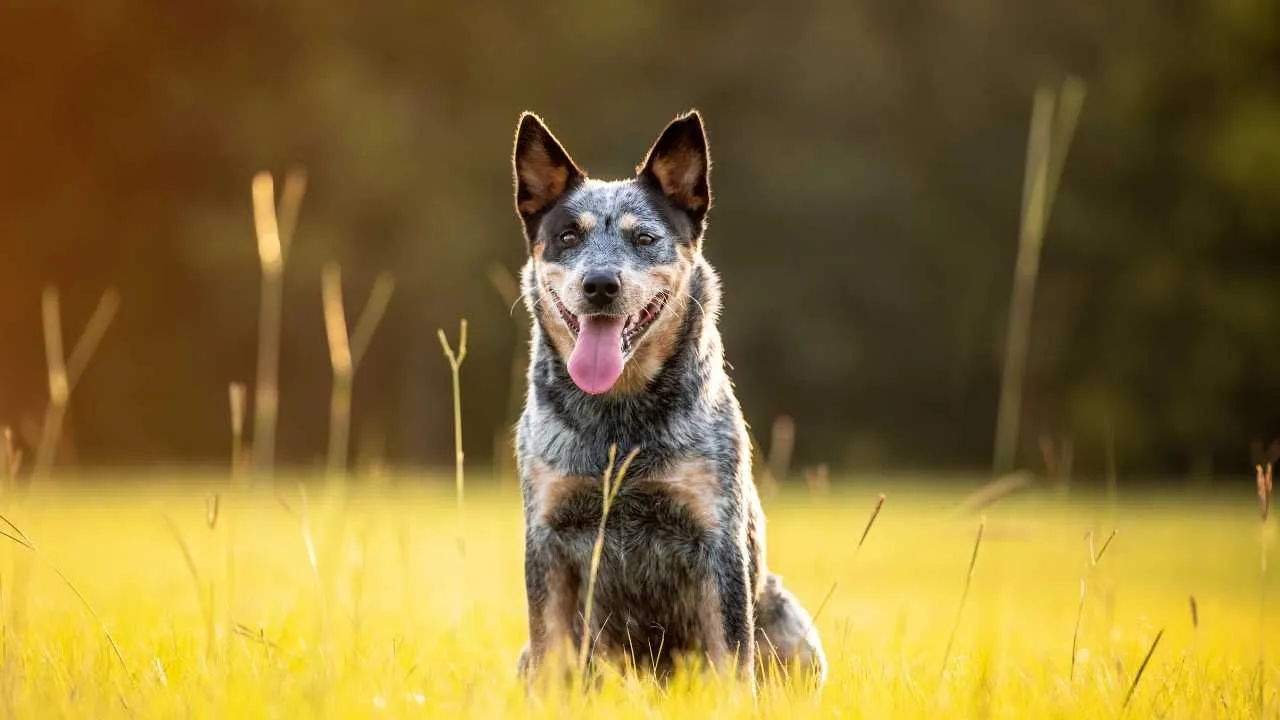
With their endurance and keen intelligence, these dogs are made for covering long distances under tough conditions. Whether navigating rocky paths or enduring dry, sun-soaked terrain, they thrive on challenges and excel as hiking partners in desert landscapes.
Their alertness and drive to work also make them naturally attentive to their surroundings, helping keep them aware of nearby wildlife or trail hazards.
Exercise
Australian Cattle Dogs are known for their intense energy and require over two hours of exercise daily to stay healthy and content. Hiking not only helps burn off their physical energy but also keeps their minds sharp through varied sights, scents, and terrain.
Long hikes offer a perfect outlet for this breed’s stamina, while simultaneously satisfying their instinctual need for purpose and movement. Without sufficient physical activity, they may become bored and display destructive behaviors.
Fact: Originally bred in Australia for herding cattle over vast, rugged distances, the Australian Cattle Dog is incredibly hardy and thrives in arid, active environments.
6. American Foxhound

Bred to track scents over long distances and through challenging terrain, these agile and tenacious dogs excel in vast, open spaces where their strong noses and endurance come to life. They revel in exploring dry landscapes and arid paths, following invisible trails with laser focus.
While they’re affectionate and kind at home, it’s in the great outdoors, especially the rugged backcountry, where they truly shine.
Exercise
This breed requires an impressive amount of physical activity, often exceeding two hours a day. Their high energy levels are best matched with strenuous routines like long hikes or desert treks, where they can run freely and satisfy their strong instinct to roam and investigate.
Activities like long-distance fetch or trail runs in secure environments are ideal. Weekly grooming is minimal, though dust from trails may call for extra wipe-downs post-adventure.
Fact: Despite their working dog roots, American Foxhounds are gentle companions with sweet, expressive eyes and a strong loyalty to their human pack.
7. Dalmatian

With a rich history as endurance-driven carriage dogs, Dalmatians have the stamina and drive to keep pace on even the longest trails. Their sleek, spotted coats not only stand out against arid backdrops but also help them handle the heat with a bit more grace than heavier-coated breeds.
Loyal, spirited, and naturally energetic, these dogs thrive when given a physical outlet, especially when it involves exploring new terrain. Their love for movement, paired with a curious nature, makes them ideal for owners seeking an engaging and tireless hiking companion.

Exercise
Dalmatians require a high level of daily activity, ideally 1.5 to 2 hours, to keep their minds and bodies balanced. Activities like brisk walks, jogging, and desert hikes provide both stimulation and satisfaction.
For younger dogs, exercise should be age-appropriate, with play taking priority over long-distance movement. Adult Dalmatians, however, flourish when given outlets like scent work, enhancing their mental engagement alongside physical endurance.
Fun Fact: The Dalmatian’s spotted coat, their signature feature, makes them instantly recognizable, even on dusty trails far from civilization.
8. Thai Ridgeback

Originating from Thailand, this ancient breed was developed for survival in hot, harsh climates, making them well-suited for dry, open-country treks. Their lean, muscular build and alert disposition equip them for long distances and uneven trails.
While reserved around strangers, they are intensely loyal to their people, often staying close and protective during hikes. With keen senses and a naturally independent streak, Thai Ridgebacks are both capable explorers and vigilant guardians.
Exercise
To stay balanced and healthy, Thai Ridgebacks require a minimum of one hour of vigorous activity each day. Hiking is a favorite among their outlets, along with running, swimming, and games like fetch or rally.
Thanks to their moderate-to-high energy levels, these dogs thrive when given challenging, dynamic environments. However, due to a strong prey drive, it’s best to keep them on a leash unless in a safely enclosed area.
Fact: Thai Ridgebacks also enjoy agility and obedience work, ideal for active owners who love outdoor adventures combined with structured training.
9. Basenji
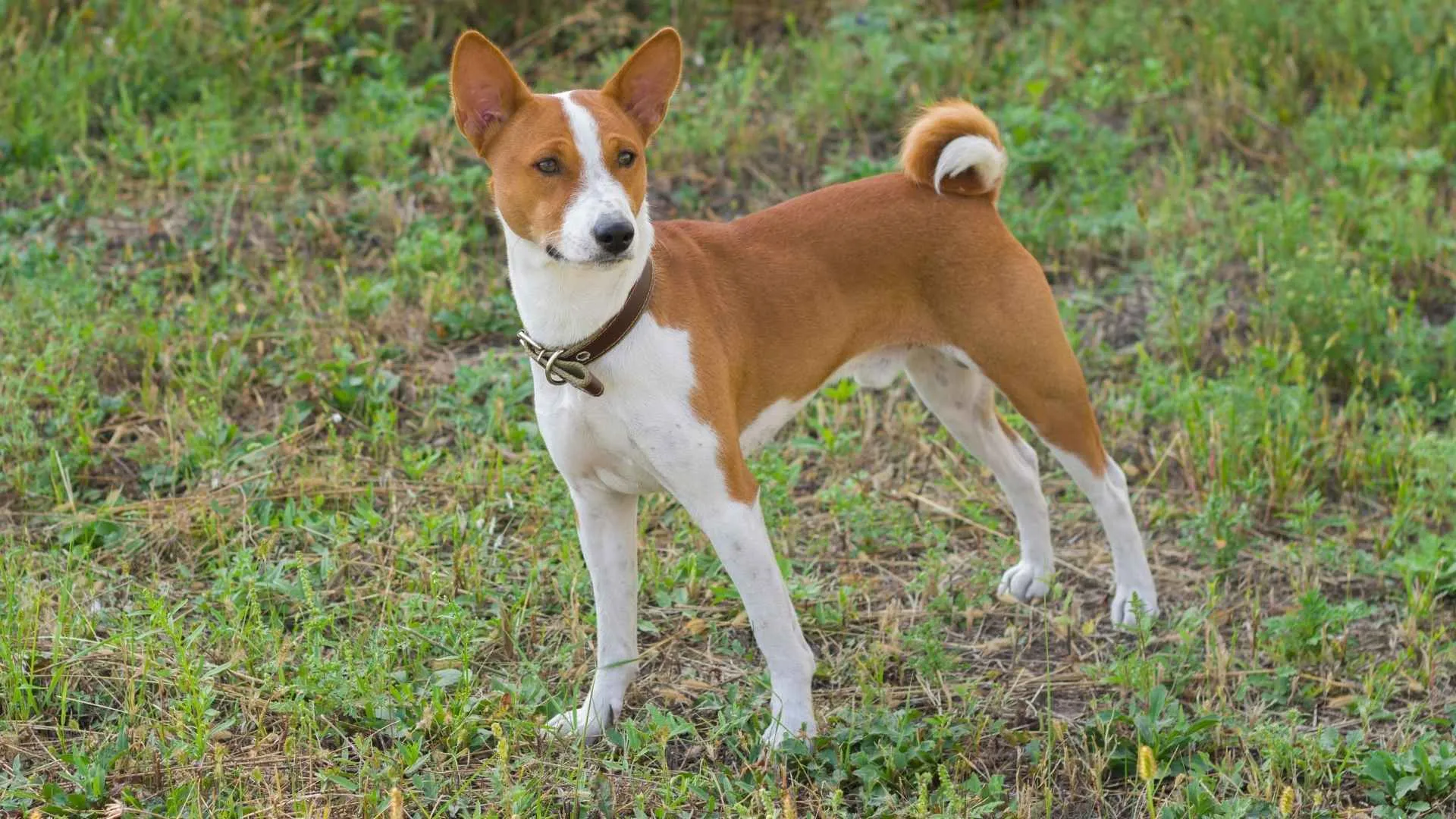
The Basenji’s natural curiosity and boundless energy make it a great companion for adventurous desert hikes. Originally bred as a hunting dog in Central Africa, this agile and athletic breed is well-suited for dry, warm environments.
Known for being independent and intelligent, Basenjis embrace the thrill of new terrains and scents. Their strong prey drive and keen senses can make every desert trail an exciting exploration. However, their off-leash recall can be unreliable, so proper training and caution are key on busy or unfamiliar trails.
Exercise
Basenjis thrive on regular physical and mental stimulation. They typically need around 60 to 90 minutes of daily exercise and enjoy long hikes that allow them to explore and engage their senses. While they can work up to five-mile runs, hikes that involve varied terrain are their true favorite.
Activities like sniffing along trails or engaging in agility tasks help satisfy their energetic nature. Given their poor road sense, it’s crucial to keep them secure near traffic-prone areas.
Fun Fact: Basenjis are known for being “barkless” dogs, often expressing themselves through unique yodel-like sounds called “baroos.”
10. Pharaoh Hound
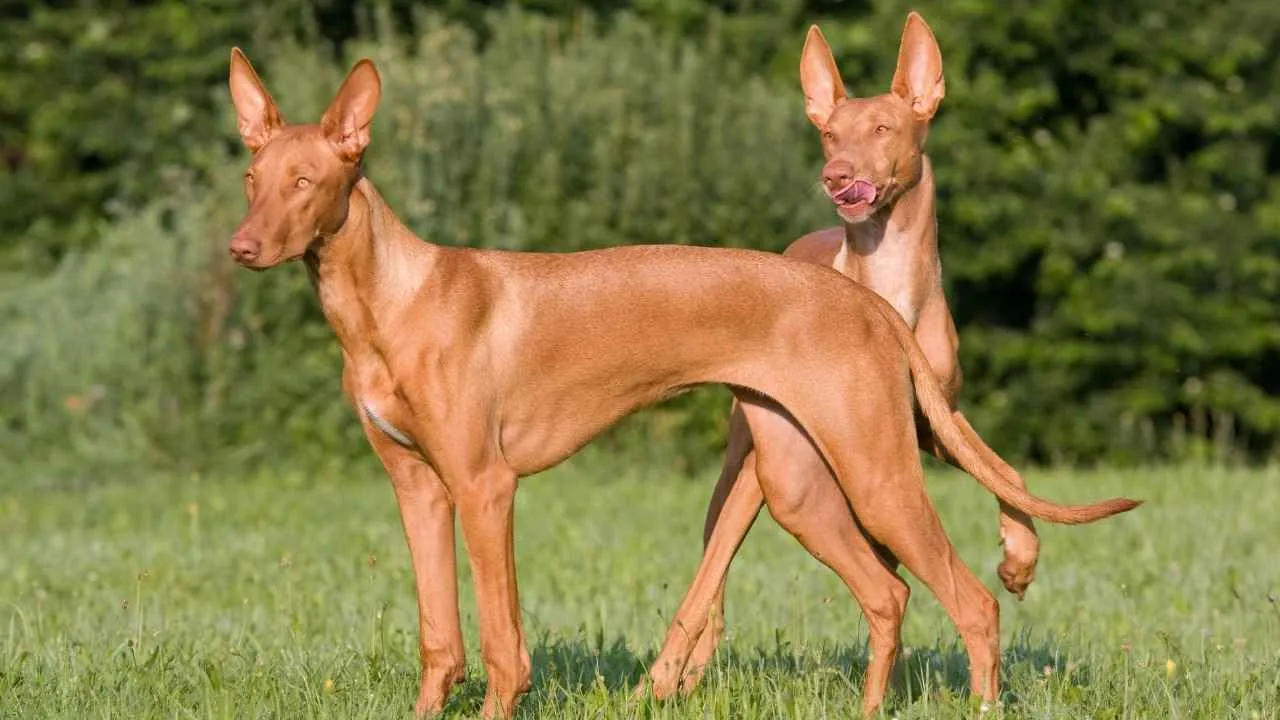
Pharaoh Hounds are a natural fit for desert hikes, having evolved for speed and endurance across rugged, arid landscapes. Their streamlined build, high stamina, and intense prey drive make them enthusiastic explorers of open terrain.
These ancient hounds excel in dry climates, where their light coat, athleticism, and keen senses are well-suited for long treks through rocky paths and sun-drenched trails. With an alert and curious demeanor, Pharaohs enjoy surveying vast stretches of wilderness alongside their humans, embodying both grace and power in motion.
Exercise
Pharaoh Hounds need regular, vigorous activity to stay mentally and physically fulfilled. A self-motivated runner may enjoy two daily sprints of 15–20 minutes in a fenced-in area at least 50 feet by 50 feet and 6 feet high.
For those less inclined to self-run, long walks of at least 20 minutes, twice daily, are necessary. However, their strong hunting instincts mean they must never be off-leash in open, unfenced environments, regardless of training.
Fun Fact: Pharaoh Hounds are known to “blush” when excited, their ears and noses flush with a rosy glow, adding to their already striking appearance.
Conclusion
Desert hikes aren’t just about enduring the heat; they’re about sharing unforgettable adventures with companions built for the journey. While breeds like the Pharaoh Hound thrive on open, rugged terrain, they’re not alone in their love for long treks. Dogs such as the Siberian Husky and Alaskan Malamute, though known to pull sleds, also have the stamina to spend many hours exploring in dry climates when properly conditioned. These breeds, along with agile Border Collies, are well-suited to outdoor challenges and thrive on constant stimulation.
Whether you’re traversing sandy dunes or rocky paths, some dogs like Labrador Retrievers bring enthusiasm and loyalty to every step. Others, like the powerful Bernese Mountain Dog, may prefer cooler climates but still enjoy moderate hikes beside both you and other dogs when properly acclimated. No matter the breed, ensure your canine companion has their own supplies, from water to protective gear, especially for those bred to hunt large game and roam vast landscapes with endurance and purpose.


